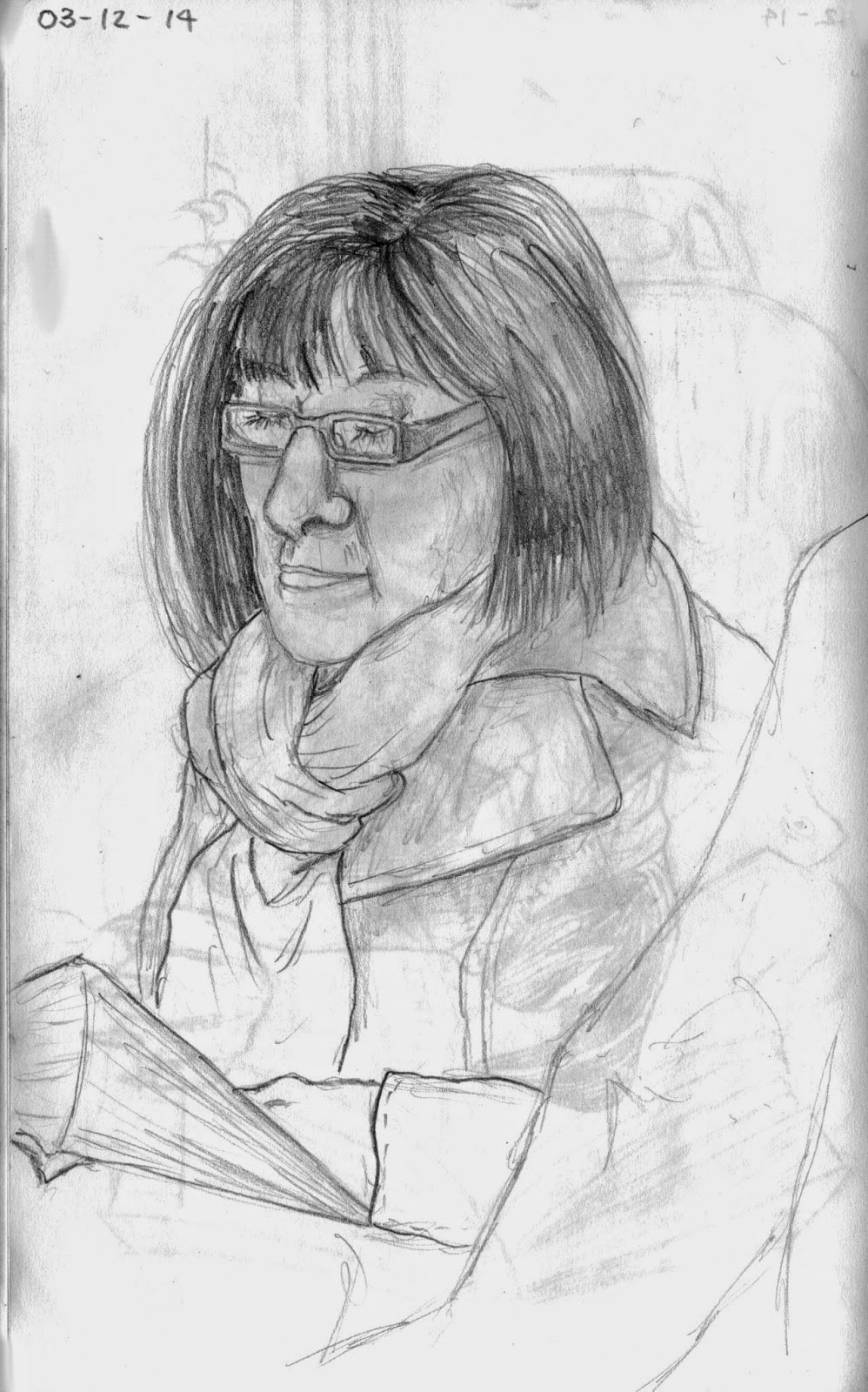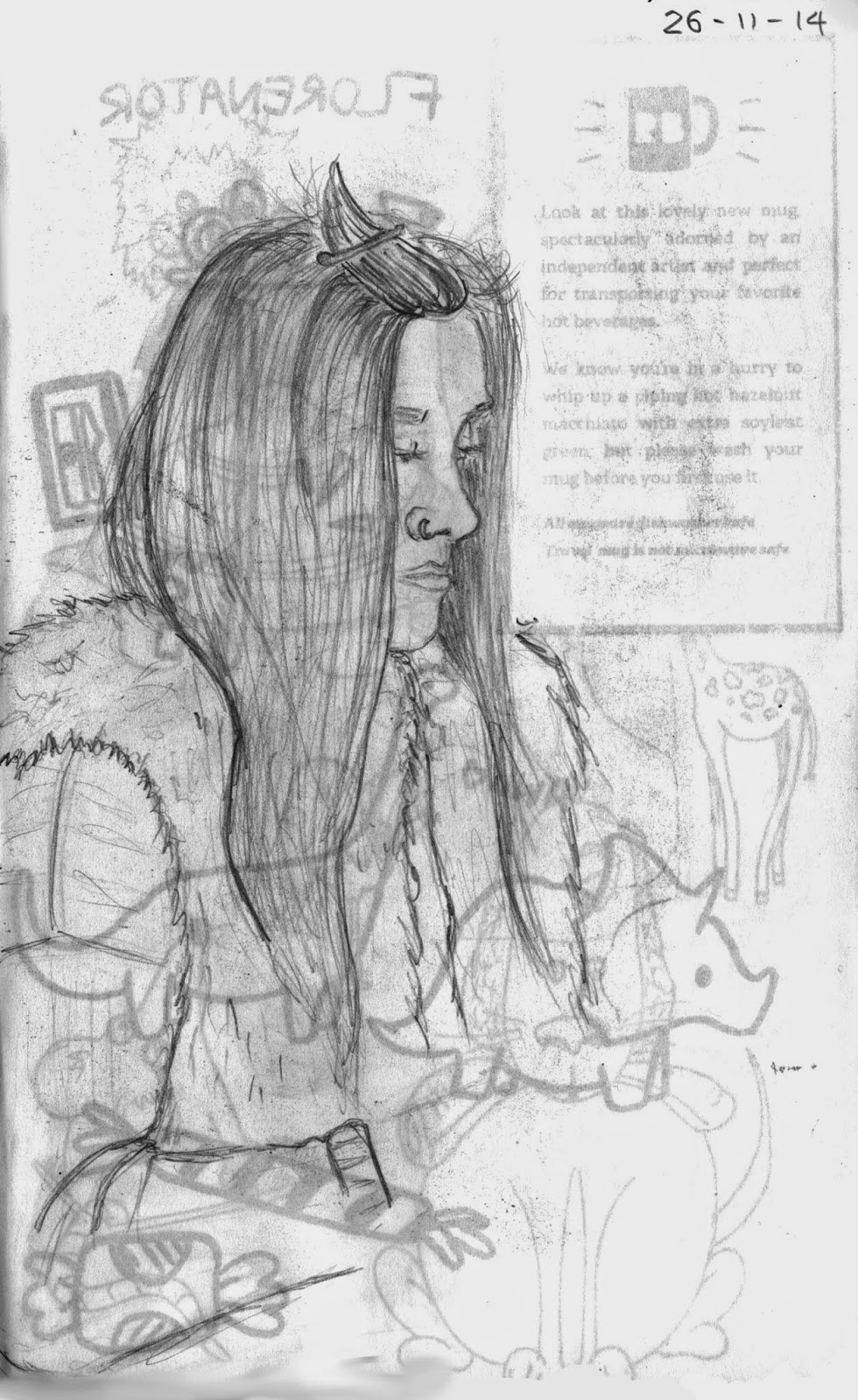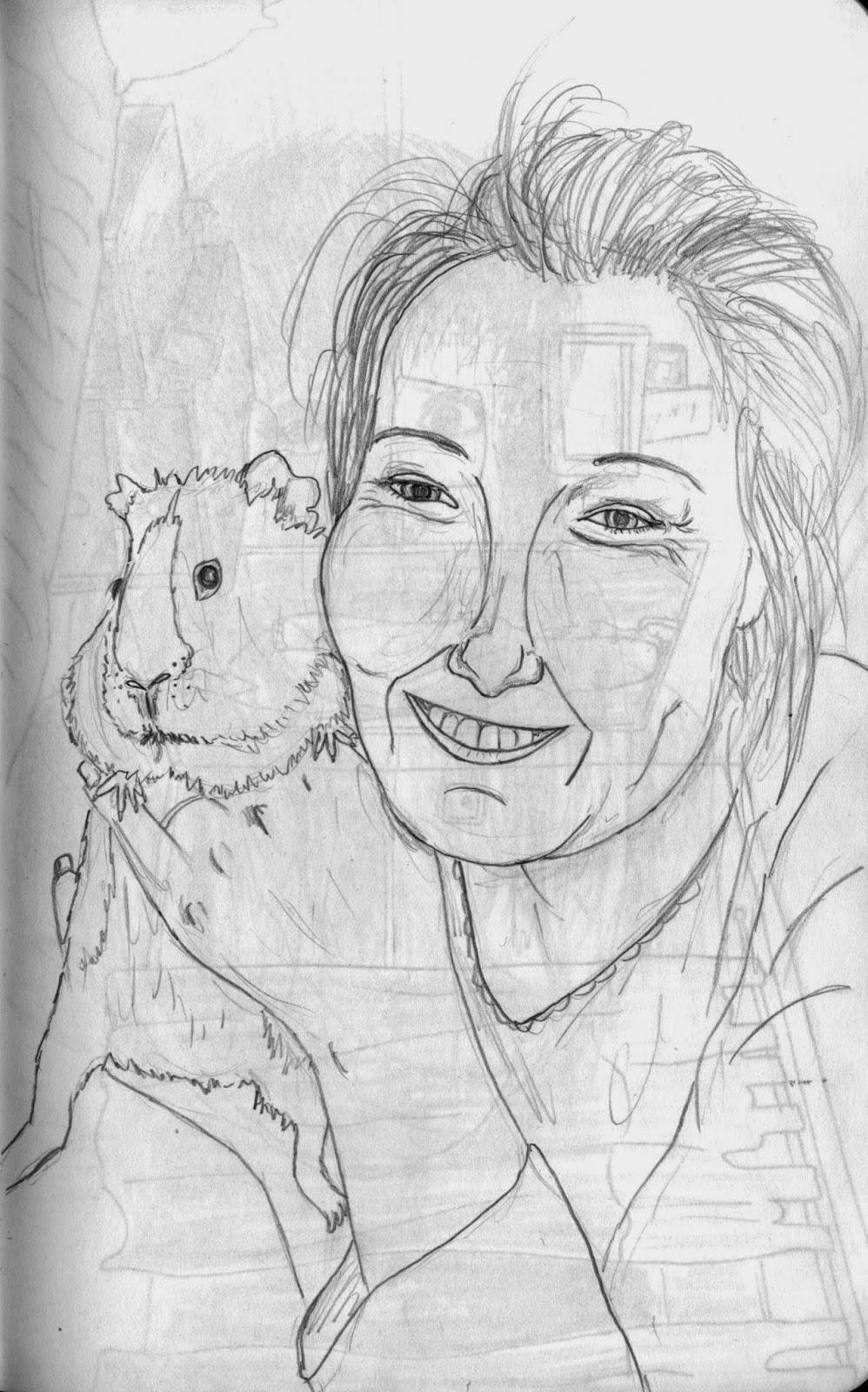This essay is going to address how gender has been
represented in western animations. The World Health Organization defines ‘gender’
as being the “socially constructed roles, behaviours and attributes that
society considers to be appropriate for both men and women”, where as ‘sex’
refers to the “biological and physiological characteristics that define men and
women” (who.int, 2015). This means that aspects of ‘sex’ will not differ much
between different societies (for example, women have developed breasts that are
usually capable of lactating while men have not), yet there is room for
differentiation between different societies in terms of ‘gender’. This essay
will bear this definition in mind when exploring how gender has been
represented in animations. It is going to primarily focus on females and their
roles, and how they may have potentially been sexualised, starting with
Disney's
Snow White and the Seven Dwarfs.
Disney practically set the standards for animation and Snow
White and the Seven Dwarfs was their first feature length film. It was
recognised that Disney’s audience was primarily female so this had a massive influence
on the characters he designed at the time. “I feel this sequence would be for
the women. After all 80 per cent of our audience are women. If we get something
they loved it would help because there is a lot of slapstick stuff that women
don’t like so well. If our characters are cute they’ll like them. We don’t
cater to the child but to the child in the adult – what we all imagined as kids
is what we’d like to see pictured” (Davis, 2007, Page 110). Snow White was
designed with his audience in mind, and he took from what the average American
woman was like at the time. During the 1930/40s, women were typically
housewives and it was considered that their role was to stay at home and take
care of the house and children, which can explain Snow White's character. She
is depicted as an innocent, sweet-natured and gentle princess, and when she
finds the dwarfs in the forest, she acts motherly towards them and is happy to
keep their house clean.
At the time of the film's release, there were very mixed
views of Snow White. John C. Flinn wrote, "Snow White is the embodiment of
girlish sweetness and kindness"(Variety.com, 1937) and praised the film
for being one of the finest examples of Technicolor, but other critics didn't
share the same opinion as Flinn, and saw her as a dull and boring character.
Roger Ebert stated that if the film had been primarily about Snow White
"it might have been forgotten soon after its premiere" (
Rogerebert.com,
2001). Where as the film is still considered to be a classic today as it
is the first full-length animated feature in colour, there are still mixed
views about the protagonist. Many have considered the film to be sexist, as
Snow White does not show much ambition or motivation, with her only goal
seeming to be to find a handsome prince which gives the impression that
"beauty takes precedence over personal ambition and all of life's problems
can be solved by finding the right man" (
Flickeringmyth.com, 2014). This viewpoint
is strengthened by the fact that wild animals become tame in the presence of
her beauty, and that the prince falls for her based on her looks, showing that
she is admired primarily for her appearance rather than anything else. It is
also considered sexist as it implies that it's in a woman's nature to clean, as
Snow White cleans the cottage with the animals when she first finds it in it's
horrific state.
She is allowed to stay
with the dwarfs because of this, as well as the fact that she cooks. At the
time of the release this may have been an accurate representation of women, as
their roles were much more submissive, but the animation is not very
representative of women today.
Cinderella
A similar thing goes
for
Cinderella (released in 1950).
When Cinderella's father dies at the beginning of the film, she is
forced to slave away for her stepmother and her two daughters. She is very
passive about being treating poorly by her family, and she does not attempt to
try and make her life better. Instead she waits for someone to save her. Her
fairy godmother visits her as she is about to give up hope, and she is granted
to go to the ball, where she falls in love with the Prince, who had rejected
every girl he saw before Cinderella. Again, this shows that appearance is
favoured over personality and the fact that she is a hard worker; he had not
even met her before that night. The two end up celebrating their wedding at the
end of the story, and she returns to her usual princess-self, which again
suggests that women's problems can be solved by finding the right man.
It has been said, "all Disney's female characters are
weak, passive figures who sit around waiting to be 'saved by the guy'"
(Davis, 2007, Page 9). Snow White and Cinderella as mentioned above, are great
examples that can back up this statement, but there are a good number of female
protagonists that go against the "Disney norm". Merida from
Brave
(produced by Pixar and released by Walt Disney Pictures in 2012) is far from a
weak character, but instead she is strong and determined.
The film differs from most Disney films, as
it isn’t a story about a girl who seeks marriage or romance, instead Merida
refuses to become betrothed. She sabotages the Highland Games that were set up
by her parents for Merida’s hand in marriage, and during the games she even
proves herself to be more skilled than the male contestants in an archery
tournament, a supposed “male sport”.
This ultimately leads to an argument with her mother - Queen Elinor -
and ends up accidently turns her into a bear with a spell she received from a
witch when she had stormed out and she is forced to undo the spell herself
before it becomes permanent. So rather than the film having an underlying
romance plot, it actually focuses on the relationship between mother and
daughter, which many have seen to be a breath of fresh air compared to the usual
story about a damsel in distress and her male love interest. Also, Merida never
once relies on someone else (with the exception of her mother in bear form,
fighting in the odd scene) to help her with her problems; instead she is
independent and uses her own initiative to tackle the situation by herself.
Furthermore she shows that she has the skills to survive on her own in the
wild, as she is able to hunt, cook and prepare food for herself and her mother,
which was typically the male’s role around the 1930s and the era in which the
film was set.

Merida - Brave
The film was received in a much more positive light than
both
Snow White and the Seven Dwarfs and
Cinderella, and many
critics praise Merida for being “a fairy-tale feminist” and not needing to be
rescued by a male or prince, yet she is a “tougher, more self-reliant heroine
for an era in which princes aren’t so charming” [6]. Merida has also been
admired for her body image, in particular by Ophelia’s Place, a charity that
helps young girls with eating disorders. They praise the character for having
“a more realistic female body shape, as opposed to a Barbie-like figure, so
coveted by today’s media” (Opheliasplace.net, 2012) unlike Snow White and
Cinderella, who both have a skinny waist and a general slim physique.
Frozen
- despite it being a massive commercial success - has also been criticised for
this very reason. Elsa and Anna have been criticised for being too skinny and
not accurately representing a realistic body shape. Mayiam Bialik stated that
the characters had "tiny waists, ample busts, and huge heads" and
that her sons thought they "looked like BRATZ dolls" (Kveller.com,
2014).
Where as this is not a healthy
body image for the girls to have, Disney did a good job of getting across the
message that "not everyone is perfect", by showing Anna with a
"bed-head" when she woke up in the morning. Many viewers thought it
made a nice change to see this side of the character where they aren't
"made-up" with make-up and their hair is a mess.
Frozen is also
a good example of where the female protagonist in the film is not a weak
character who's sole purpose in life is to find the right guy. Although the
film does have an underlying plot of Anna finding love, the story is based on
the relationship between the two sisters, and trying to save the country from
being banished into an eternal winter. Although Anna does have help from
Kristoff along the way, she manages to save her sister (and ultimately herself)
by sacrificing herself. Not only does this strengthen the bond between the two
characters, it shows that she was brave enough to save her sister and didn't
need a man to step in and do it for her.
Captain Amelia from Disney's Treasure Planet is
another great example of this. Although she is not the main character in the
film, she does demonstrate that "she will take no interference from
anyone" (Davis, 2007, Page 211). When James Hawkins (Jim) and Dr. Doppler
first step on board the ship, they mistake Mr. Arrow to be the captain. He sets
them straight by pointing out that he isn't the captain, but Amelia is in fact
the one in charge. Not only does she have the role of what usually is a male's
job, but she plays it well and demonstrates her courage, intelligence and
capability by assuring the safety of herself and both Dr. Doppler and Jim when
they realise that the crew that was hired are in fact pirates after the
treasure in Treasure Planet. Although, she does surprisingly fall in love with
Dr. Doppler so there is a underlying romance plot in the story. With that being
said, this is not focused upon greatly in the film and Amelia does not let the romance
change who she is. In the final scene you can see the two together with their
children, but she is still dressed in her uniform, implying that she is still
in charge and still capable of taking care of herself.

Captain Amelia with Dr. Doppler and Ben - Treasure Planet
Not only has the
personality of female characters been criticised in animations, but their
appearance as well, in particular the difference between the "good"
characters and villains. It is expected that these characters are going to have
an evil nature, but Disney usually portray the villains as being unattractive
or old, particularly in the "classic years" from 1937-67. In
Cinderella,
the step-sisters are depicted as being horrendously ugly and they come across
as being the bad characters in the film because they abuse and bully Cinderella.
Another good example of where the evil character has been depicted as being
ugly is Yzma from
Emperor's New Groove. In fact she was so ugly that she
was often described as being "scary beyond all reason".
Yzma - Emperor's New Groove
Another example of where this is the case is in The
Little Mermaid. Ursula is a large "sea-witch" who isn't exactly
attractive, and she tries to harm Ariel to try and regain power. When her plans
fail she turns herself into a beautiful young woman and goes by the name of
Vanessa, in an attempt to marry Eric and steal Ariel's soul. When she is this
beautiful girl, she goes unsuspected until it is almost too late simply because
of her looks and kinder personality. A similar situation occurs in Snow
White. The Queen asked her magic mirror who was the fairest of all and when
the mirror replied with "Snow White" one day rather than herself she
set out to kill her in an act of rage and jealousy. But she doe s not try to do
this herself. Firstly she hired a
Huntsman to take Snow White into the forest and kill her, but when he fails to
do so she sets out to do it herself, but rather than going in her own form, she
transforms into an "old hag" and tries to kill her with a poisonous
apple. So not only does it encourage the audience to associate evil with being
old and unattractive (this point is strengthened by the fact that no one
suspected Ursula to be evil when she was slim and pretty), but it gives the
impression that beauty is the most important trait to have, as the Queen is
willing to go to extreme lengths to be the "fairest in the land".
It has been argued
that Disney have created a good range of female characters. Granted in the
earlier years their characters such as Snow White and Cinderella could be
considered as being sexist for being your typical "damsel in
distress", but the time at which they were released has to be taken into
consideration, as this may have been an accurate representation at the time.
The message behind these early animations may not have been a positive one, but
as gender roles have changed, so have the way that women have been represented
in animations, especially from The Little Mermaid and onwards. Although
Ariel did seek true love, she was a much more courageous and outgoing character
than the earlier Disney Princesses, and she showed ambition of wanting to
explore the human world. From The Little Mermaid came Pocahontas
and Mulan, Mulan arguably being one of Disney's most independent
characters. She took her father's place in the army, and fought for her county
on his behalf. She did however have to dress up as a man in order to be able to
fight, but obviously this is because women were not allowed to serve in the
army during that time, but she did demonstrate her determination and didn't
wait around to be saved. Instead she became the rescuer of china.
It has also been found that as feminism has rose, romance
has become less of a main storyline and more of a side plot. The main message
of "all women's problems can be solved by finding the right man" is
pushed aside as the stories begin to focus on more important messages, such as
seeking knowledge and being independent (demonstrated in The Little Mermaid),
and the relationships between family members, as shown in both Brave and
Frozen.
Arguably, the only area that Disney needs to consider is the
appearance of their characters. Most of the protagonists are slim and
beautiful. Merida was a great character because she was a more healthy weight
who had a more realistic body shape, but we are still yet to see a female
character that is over-weight. There have been many characters that have been
on the large side, but they haven't been the main character of the film. It
would be nice to see a "plain" character, whose beauty comes from a
wonderful personality. This would ultimately portray that there is more to life
than being beautiful, which animations in the past have seemed to suggest.
Similarly, it would be nice if Disney strayed away from the idea that villains
are unattractive people. They have done a good job recently with
Frozen,
showing that in the end Hans was the bad guy who was only using Anna to get
into power, but there haven't really been any female villains that have not
been old or ugly.
Hans - Frozen
To conclude, we really do need to consider the time at which
the films have been released before we accuse them of being sexist, as they
easily could have been accurate at the time of their release, but there also
needs to be a wider range of characters so that the female population can be
accurately represented. Clearly the way that females have been represented in
Disney's animations has changed alongside society's changing norms and gender
roles, but their films need to continue to strive to represent these changes
and not just focus the story on the typical fairy tale like they have been
known to in the past.
Bibliography
Davis, A. (2007) Good Girls and Wicked Witches, Eastleigh,
John Libbey and Co.
Cheu, J. (2012) Diversity in Disney Films; Critical
Essays on Race, Ethnicity, Gender, Sexuality and Disability, Jefferson,
McFarland & Co.
Bell, E; Sells, L; Haas, L (1995) From Mouse to Mermaid, Bloomington,
Indiana University Press















































